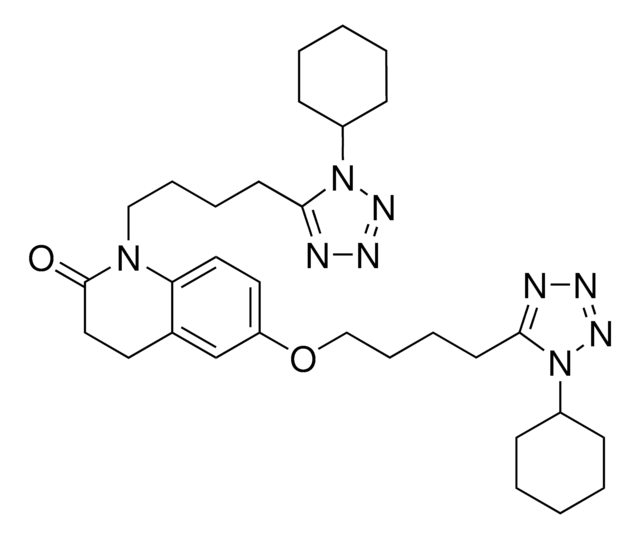50296
Melting point standard 47-49°C
analytical standard
Synonyme(s) :
Benzophénone
About This Item
Produits recommandés
Qualité
analytical standard
Niveau de qualité
Pression de vapeur
1 mmHg ( 108 °C)
Durée de conservation
limited shelf life, expiry date on the label
pb
305 °C (lit.)
Pf
47-49 °C (±0.3°C)
47-51 °C (lit.)
Application(s)
food and beverages
pharmaceutical
Format
neat
Chaîne SMILES
O=C(C1=CC=CC=C1)C2=CC=CC=C2
InChI
1S/C13H10O/c14-13(11-7-3-1-4-8-11)12-9-5-2-6-10-12/h1-10H
Clé InChI
RWCCWEUUXYIKHB-UHFFFAOYSA-N
Vous recherchez des produits similaires ? Visite Guide de comparaison des produits
Description générale
Application
Caractéristiques et avantages
- Traceable to primary standards from LGC, London
- Grade: Analytical Standard
- Melting point standardized in the thermodynamic mode of analysis
- Standard deviation up to ± 0.3 °C
- Available with certificates of analysis and safety data sheet
Mention d'avertissement
Danger
Mentions de danger
Conseils de prudence
Classification des risques
Aquatic Chronic 3 - Carc. 1B - STOT RE 2 Oral
Organes cibles
Liver,Kidney
Code de la classe de stockage
6.1C - Combustible acute toxic Cat.3 / toxic compounds or compounds which causing chronic effects
Classe de danger pour l'eau (WGK)
WGK 1
Point d'éclair (°F)
280.4 °F - closed cup
Point d'éclair (°C)
138 °C - closed cup
Équipement de protection individuelle
dust mask type N95 (US), Eyeshields, Gloves
Faites votre choix parmi les versions les plus récentes :
Certificats d'analyse (COA)
Désolés, nous n'avons pas de COA pour ce produit disponible en ligne pour le moment.
Si vous avez besoin d'assistance, veuillez contacter Service Clients
Déjà en possession de ce produit ?
Retrouvez la documentation relative aux produits que vous avez récemment achetés dans la Bibliothèque de documents.
Les clients ont également consulté
Articles
Separation of Acetaminophen, meets USP testing specifications, 98.0-102.0%, powder; Caffeine, meets USP testing specifications, anhydrous; Benzoic acid, meets USP testing specifications; Aspirin, meets USP testing specifications
Protocoles
HPLC Analysis of Benzoic Acid Derivatives on Ascentis® C18
Notre équipe de scientifiques dispose d'une expérience dans tous les secteurs de la recherche, notamment en sciences de la vie, science des matériaux, synthèse chimique, chromatographie, analyse et dans de nombreux autres domaines..
Contacter notre Service technique










